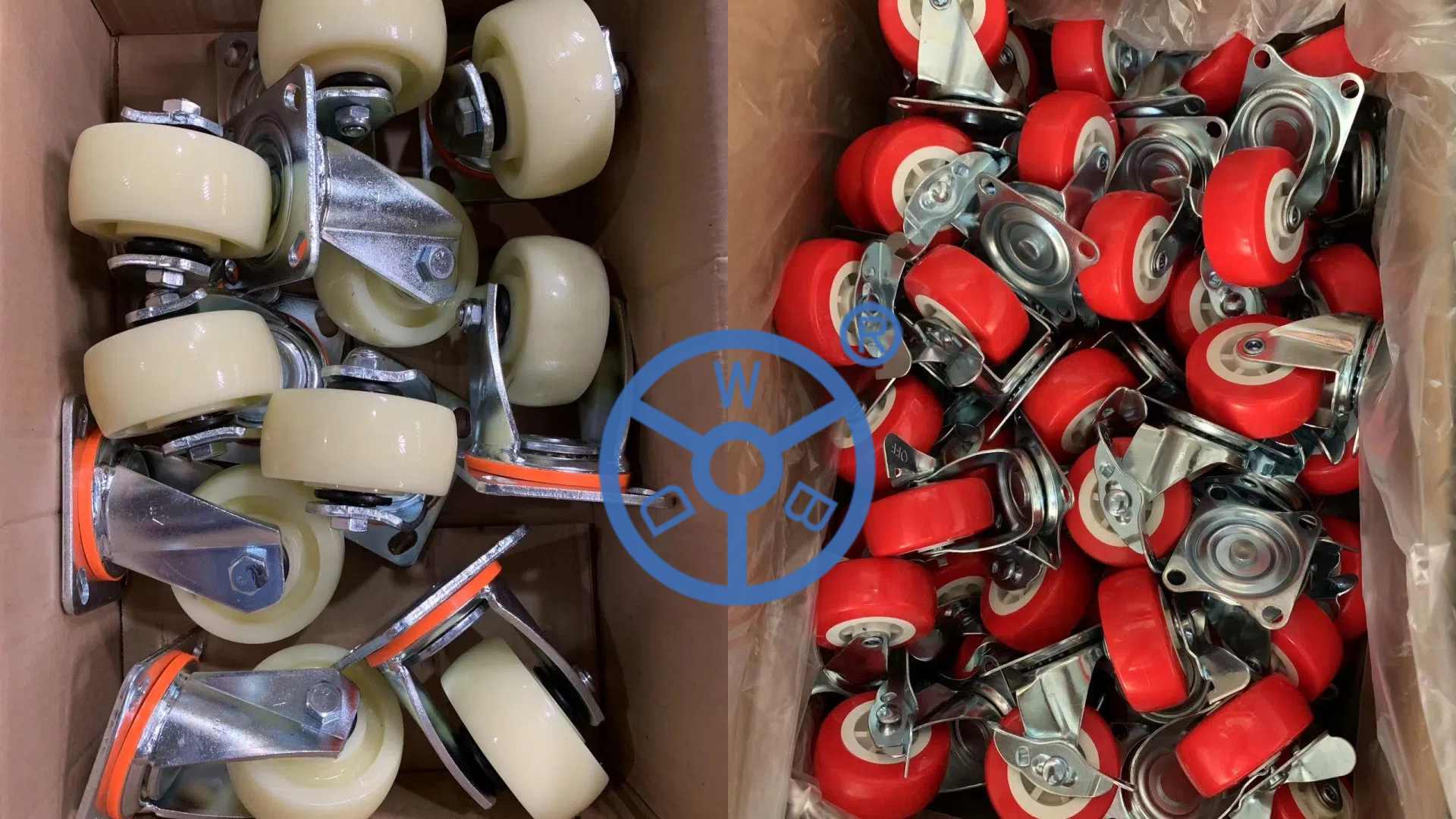
Swivel caster wheel is the most common term that is used in online searches as well as offline stores. Bolt Hole Swivel Caster Manufacturers are popular because of their swivel action, with the help of which they promote smooth and easy movement of trolleys moving in any direction, and that too with little effort.
Simply put, swivel casters can rotate 360 degrees. As a result, they enable smooth movement of loading equipment. This quality enhances their durability and performance. In industrial settings, heavy duty swivel casters are commonly used to move heavy machinery or equipment from one place to another.
However, when choosing a Swivel Escalater Castor Wheels, do not forget to ask caster manufacturers about the type of swivel section. This is because the swivel section’s type affects the caster’s final movement. The double ball raceway is the most common and economical swivel section. However, if you want a durable caster wheel, choosing a kingpinless swivel caster is the best option. Here are some applications of swivel casters:
Equipment handling
Warehouse operations
Manufacturing units
Office furniture
Healthcare facilities
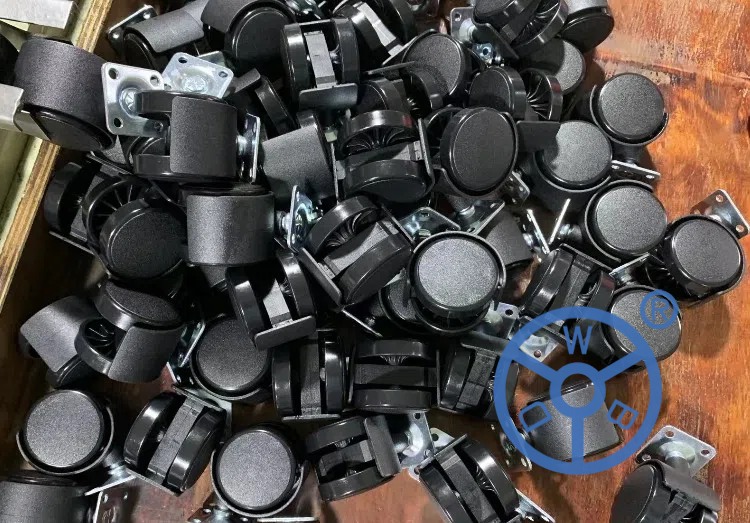
The Importance of Office Chair Casters
Office chair casters are essential for enhancing mobility and convenience in the workplace. They allow chairs to glide smoothly across various surfaces, reducing effort and improving accessibility. Available in diverse designs, casters can accommodate different flooring types, weight capacities, and chair models. Selecting the right casters not only prevents floor damage but also enhances ergonomics and extends the lifespan of your chair.
Popular Types of Office Chair Casters
Small Casters
Small casters with adhesive backing are a versatile option for situations where traditional mounting methods like screws or bolts are impractical. They are perfect for lightweight applications, such as portable furniture or small organizers.
These casters feature a locking mechanism that ensures stability when needed, making them ideal for tasks requiring the chair to remain stationary or when used on uneven surfaces.
Combining style and functionality, transparent casters add a modern touch to any workspace. Made from durable materials, they are compatible with a variety of chair models and protect floors while maintaining aesthetic appeal.
Key Factors to Consider When Choosing Casters
Wheel Size: Proper sizing ensures compatibility with your chair and enhances performance. For example, Ylcaster's half-transparent office chair casters are designed in a versatile size, suitable for both home and school chairs.
Material: Durable materials are critical to reducing wear and tear. While many casters wear out quickly, Ylcaster casters are built to last, requiring less frequent replacements. This not only saves money but also ensures consistent performance.
Selecting the right office chair casters is essential for comfort, efficiency, and style. Ylcaster offers reliable and durable options that meet diverse needs, ensuring your chairs remain functional and stylish for years. Make the smart choice with Ylcaster today!
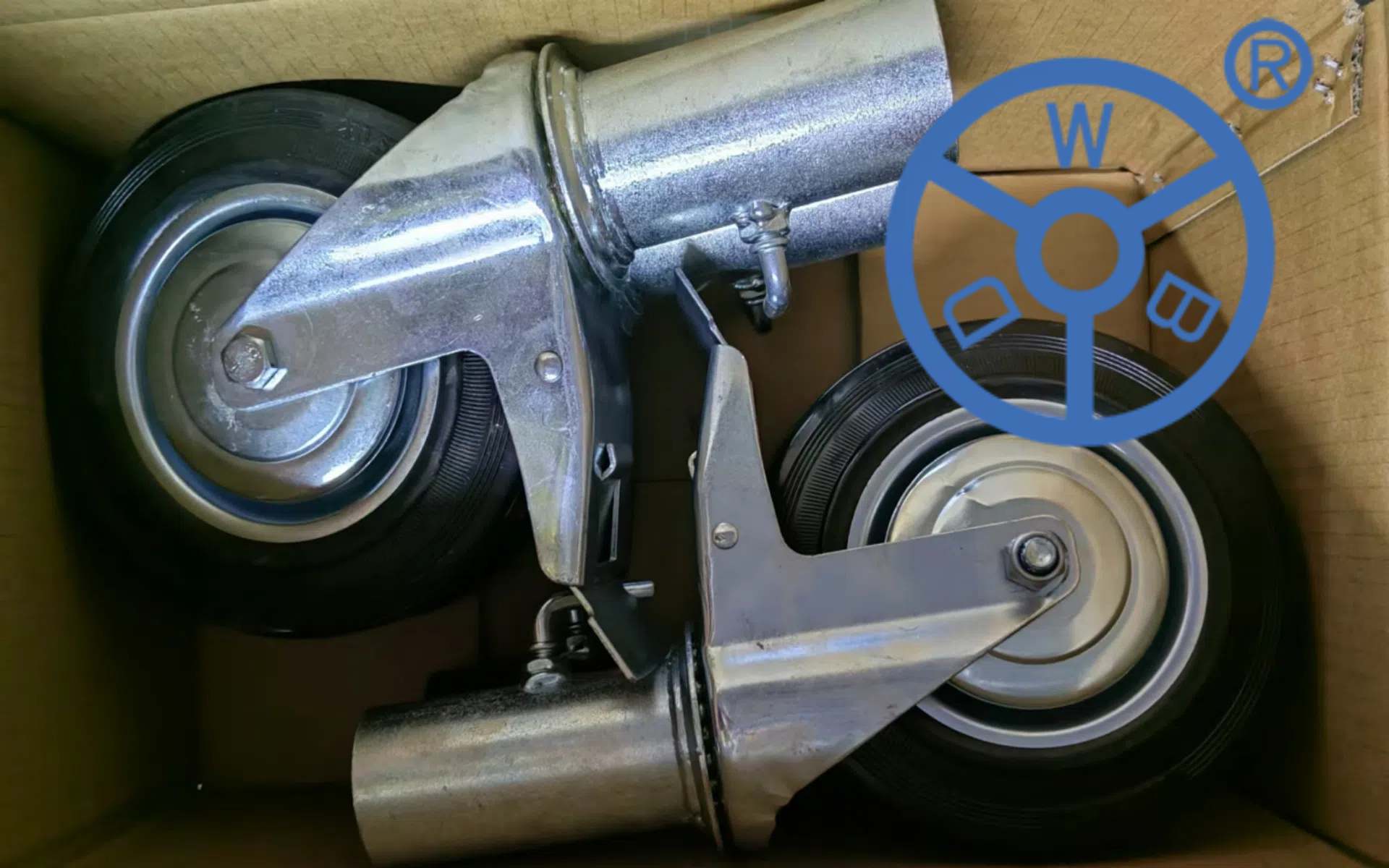
With the rise of lightweight and durable materials in construction, aluminum movable scaffolding casters are gaining popularity as a premium choice. These casters combine strength with a lighter build, making scaffolding setups safer, more efficient, and easier to maneuver. Here, we list two popular types of aluminum casters, detailing their features and advantages to illustrate why aluminum is revolutionizing the scaffolding caster market.
1. Heavy-Duty Aluminum Swivel Caster with Brake
This Caster with Brake offers a seamless blend of mobility and stability. Crafted with a robust aluminum frame, this caster can support significant weight while remaining lightweight for easy handling. Its premium swivel design ensures smooth 360-degree turns, allowing users to reposition scaffolding with ease. This caster also comes with a quick-lock brake system, providing secure stability when you need it most.
Key Benefits:
Lightweight Construction: Reduces overall scaffold weight, making setups faster and safer.
Precision Swivel Mechanism: Provides smooth, reliable movement on a variety of surfaces.
Quick-Lock Brake: Offers maximum stability on demand, ensuring worker safety.
2. Shock-Absorbing Aluminum Scaffolding Caster
This Caster is designed for rugged environments where impact resistance and durability are crucial. Its specialized shock-absorbing feature protects against vibrations and jolts, reducing wear and tear on both the caster and scaffold. With an anti-corrosion aluminum body, this caster is built to withstand harsh outdoor conditions without compromising performance.
Key Benefits:
Shock Absorption: Minimizes impact, preserving caster and scaffold longevity.
Rust-Resistant Aluminum Body: Extends caster life, even in challenging weather conditions.
Enhanced Load Capacity: Balances strength and weight, supporting a wide range of scaffolding requirements.
Advantages of Aluminum Movable Scaffolding Casters
Aluminum casters bring several standout benefits to scaffolding. Lightweight yet durable, they make scaffolding easier to transport and assemble without sacrificing load capacity. Their anti-corrosion properties make them ideal for outdoor use, maintaining their quality in varying weather conditions.
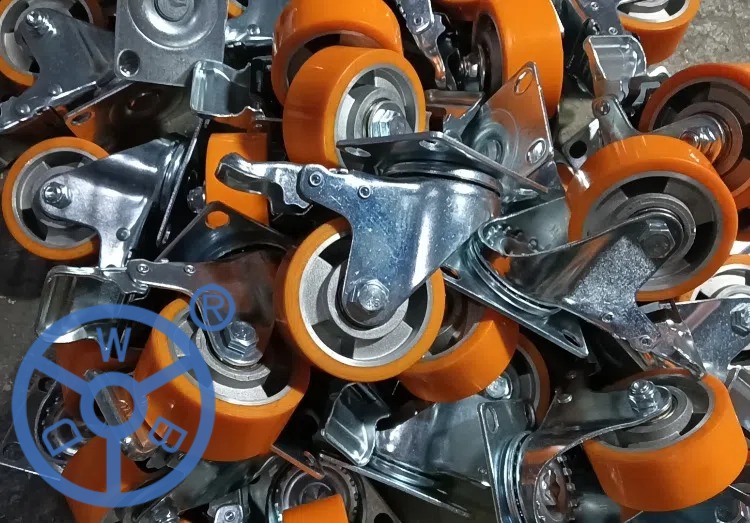
When selecting cast iron casters for industrial or heavy-duty use, understanding braking systems is crucial for optimal performance and safety. Two common options are the dual brake and the side brake. Here’s how to easily differentiate between them and decide which is best for your needs.
1. Dual Brake: Full Control
A dual brake system locks both the swivel and the wheel of a swivel caster with brake, providing maximum stability. This type is ideal for situations where movement in any direction must be entirely restricted, ensuring safety on slopes or during loading. Look for this feature if you require a caster that completely immobilizes equipment.
2. Side Brake: Simpler and Efficient
In contrast, a side brake only locks the wheel, allowing the swivel mechanism to remain functional. This option is perfect for applications requiring partial movement control, such as repositioning equipment without removing the brake entirely. A side brake is a more straightforward solution often found in lightweight to moderate-duty setups.
Choosing the Right Brake for Your Cast Iron Casters
Understanding the intended use of your cast iron casters will help you decide between these two braking mechanisms. For heavy machinery or uneven terrain, the dual brake is a reliable choice. For more flexible or lighter applications, the side brake might be sufficient.
By considering your specific requirements, you can confidently select the ideal swivel caster with brake for your project, ensuring both efficiency and safety.
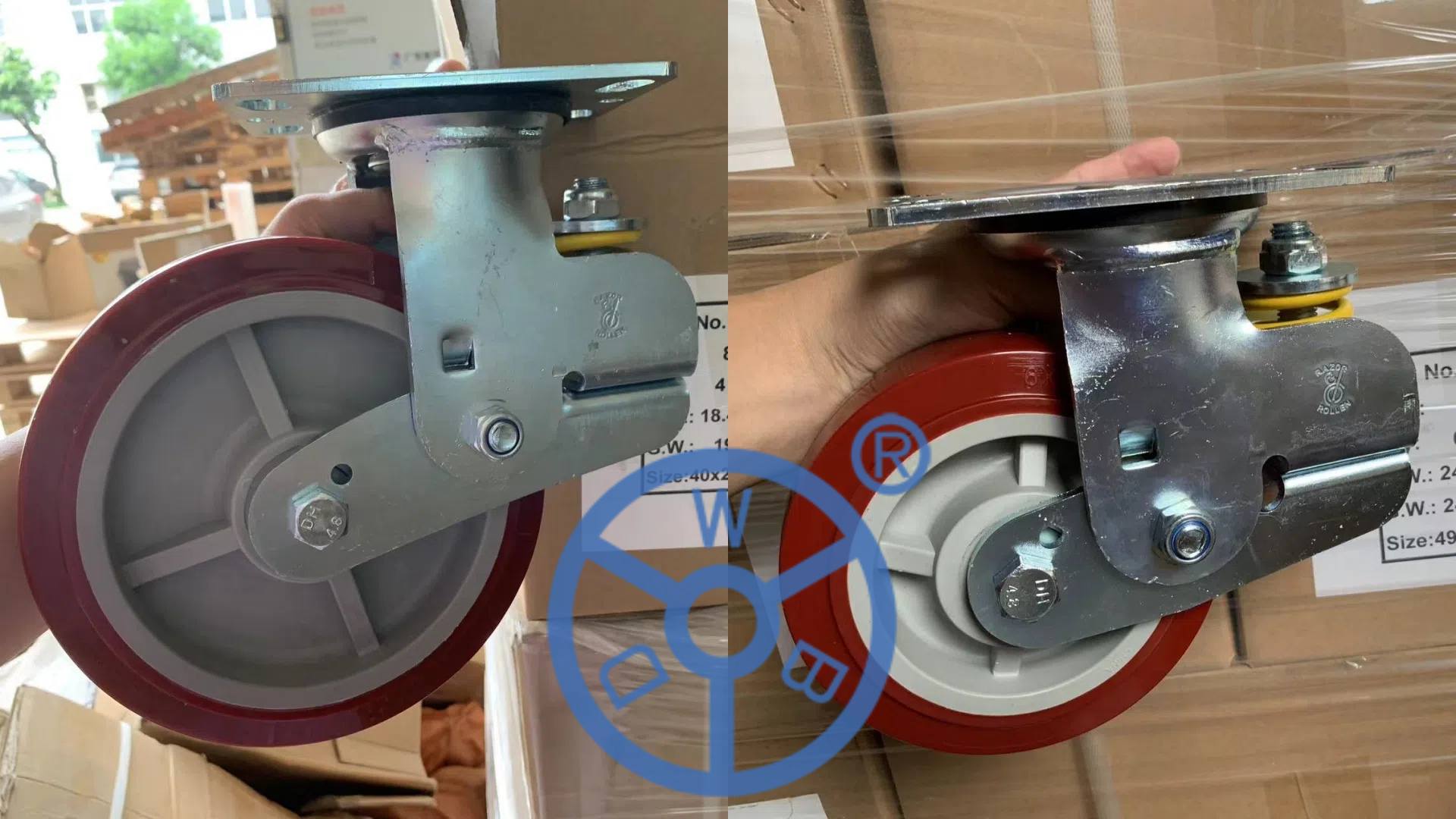
Spring loaded casters as one of the popular industrial castor, are an innovative solution designed to improve the functionality of various equipment and carts by providing enhanced mobility and stability. These specialized casters feature built-in spring mechanisms that allow for vertical movement, effectively absorbing shock and reducing the impact of uneven surfaces. This makes them ideal for applications in warehouses, hospitals, and manufacturing environments.
Types of Spring Loaded Casters:
Advantages: Combining the benefits of shock absorption with a locking feature, these casters can be securely locked in place. This is particularly useful in environments where stability is critical, such as in medical settings where equipment must remain stationary during use.
Heavy-Duty Spring Loaded Casters
Advantages: Designed for industrial applications, these heavy duty caster wheels can support substantial loads while maintaining shock absorption capabilities. They are ideal for heavy equipment or machinery that operates on uneven surfaces, ensuring safe and efficient mobility.
Spring loaded casters are essential for improving the performance and safety of equipment in various settings. By absorbing shocks and providing enhanced stability, they reduce the risk of damage and increase efficiency, making them a smart choice for anyone looking to optimize their mobility solutions.
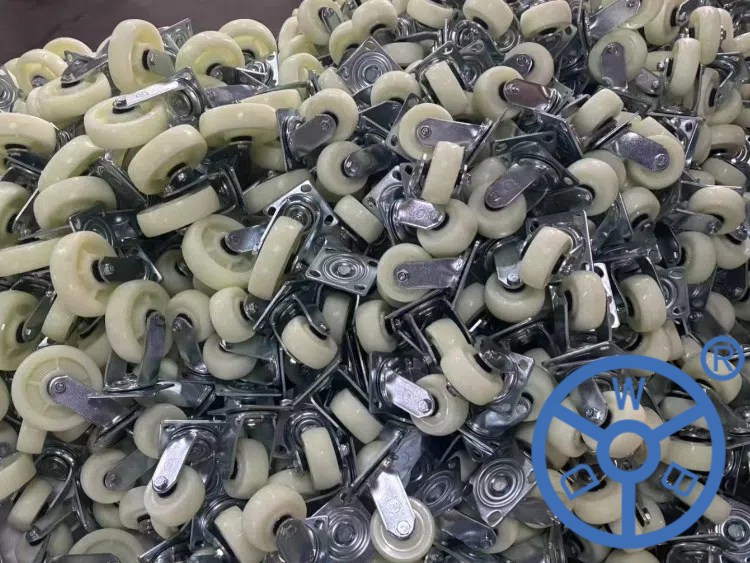
When selecting the right castors for industrial applications, understanding the different types of bearings is crucial for ensuring smooth and efficient movement. Bearings play a significant role in the performance of castors, especially when dealing with heavy loads and constant use. Here, we explore some common types of bearings used in swivel industrial castor with bearing and rubber caster wheel with double ball bearing systems.
Ball Bearings
Ball bearings are the most common type found in industrial castors. These bearings reduce friction, enabling easy movement even under heavy loads. A swivel industrial castor with bearing typically uses ball bearings to ensure smooth rotation in both directions, offering better maneuverability for carts and equipment in tight spaces.
Roller Bearings
Roller bearings are often used in environments where heavier loads are carried. These bearings feature cylindrical rollers that distribute the load more evenly, reducing wear and tear. A rubber caster with double ball bearing can include roller bearings to enhance stability and durability, especially for heavy-duty industrial applications.
Double Ball Bearings
A rubber caster with double ball bearing configuration features two sets of ball bearings, offering enhanced load capacity and smoother movement. This type of bearing is ideal for applications requiring high performance and reliability, such as in warehouses or factories with high-frequency use.
Choosing the Right Bearing
The type of bearing in your swivel industrial castor with bearing depends on your specific needs, such as load capacity, speed, and frequency of use. Ball bearings are ideal for general applications, while roller bearings and double ball bearings are suited for heavy-duty or high-demand environments.
By understanding these types, you can select the most suitable castor bearing for your industrial needs, ensuring durability and optimal performance.
When it comes to lifting heavy loads, choosing the right type of sling is crucial for ensuring safety and efficiency. Two common options available in the market are webbing slings and steel slings. Each type has its own set of advantages and considerations that need to be taken into account. In this blog post, we will compare and contrast webbing slings and steel slings, analyzing their strengths, limitations, and suitability for different lifting operations. By understanding the differences between these two options, you can make an informed decision and select the best sling for your specific needs.
Steel slings are known for their exceptional strength and high load-carrying capacity. They are often preferred for lifting extremely heavy loads or in applications where durability is paramount. Webbing slings, on the other hand, have lower load-carrying capacities but offer excellent flexibility and versatility. Their strength lies in their ability to conform to the shape of the load, providing secure and balanced lifting.
Webbing slings are lightweight and easy to handle, making them convenient for various lifting tasks. They can be easily adjusted and maneuvered into position. Steel slings, while strong, are heavier and less flexible. They require more effort to handle and may require additional equipment like hooks or shackles for attachment. The choice between the two will depend on the specific requirements and ease of use in your operation.
Steel slings are resistant to high temperatures, making them suitable for lifting operations in extreme heat or fire-prone environments. Webbing slings, typically made from synthetic materials like polyester, may have limitations when exposed to extreme temperatures and chemicals. It's important to consider the environmental conditions of your operation and choose a sling that can withstand those challenges.
Webbing slings are less prone to causing damage to lifted objects since they have softer surfaces compared to steel slings. However, they are more susceptible to wear and tear, especially when used in rigorous or abrasive environments. Steel slings, while durable, may cause scratches or dents on the load. Regular inspection and maintenance are essential for both types of slings to ensure their longevity and safe operation.
Webbing slings are generally more cost-effective compared to steel slings, making them a preferred choice for many operations. They are readily available and offer a good balance of performance and affordability. Steel slings, on the other hand, have higher upfront costs but may be more economical in the long run due to their durability and longer lifespan.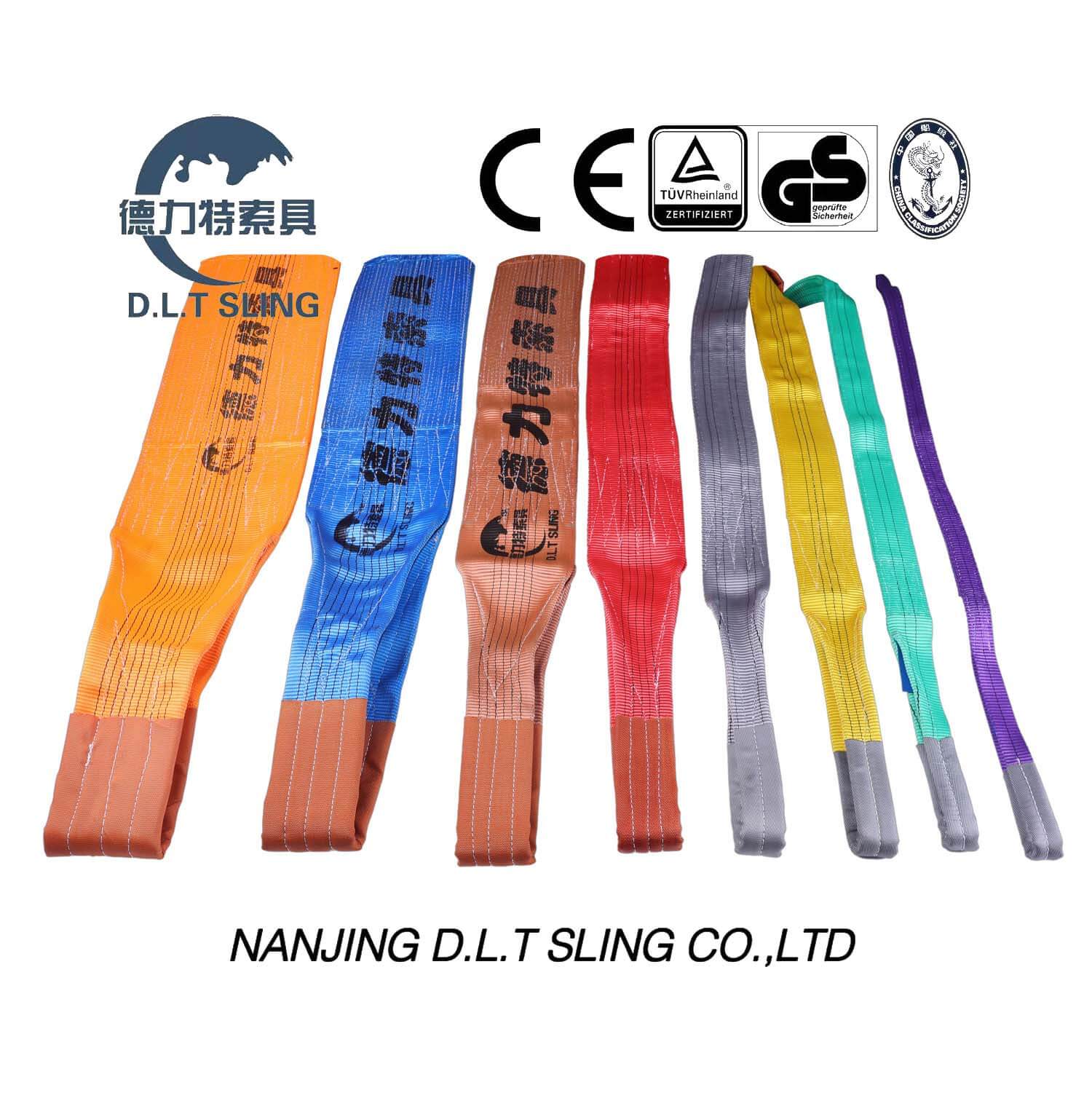
Choosing between webbing slings and steel slings requires careful consideration of your specific lifting requirements, environmental conditions, and budgetary constraints. Both options have their own strengths and limitations. Webbing slings offer flexibility, ease of use, and cost-effectiveness, while steel slings provide superior strength and durability. Ultimately, the best choice will depend on the unique needs of your operation. By assessing these factors, you can make an informed decision and ensure safe and efficient lifting.
In industrial lifting and rigging operations, selecting the appropriate equipment is crucial to ensure both efficiency and safety. Webbing slings are widely used for their versatility, durability, and load-bearing capabilities. However, with various types and configurations available, choosing the right webbing sling for your specific industrial needs can be a critical decision. In this blog post, we will explore the factors to consider when selecting a webbing sling and guide you through the process of finding the perfect match for your lifting requirements.
One of the key considerations when choosing a webbing sling is the load capacity it can safely handle. The Working Load Limit (WLL) specifies the maximum load that the sling is rated to carry under normal working conditions. It is essential to accurately assess the weight of the load you intend to lift and select a webbing sling with an appropriate WLL that exceeds the load's weight to ensure safe operations.
The length and width of the webbing sling will depend on the specific lifting application. Longer slings allow for greater flexibility in terms of lifting height and attachment points, while wider slings offer increased surface area for load distribution. Consider factors such as the shape and size of the loads you frequently handle to determine the optimal length and width of the webbing sling.
Webbing slings are typically made from materials such as polyester or nylon, both known for their strength and durability. Polyester slings have excellent resistance to UV rays, chemicals, and abrasion, making them suitable for outdoor and harsh environments. Nylon slings, on the other hand, provide exceptional stretch and elongation properties, making them ideal for handling heavy loads. Consider the specific requirements of your lifting operation and choose the material that best suits your needs.
Webbing slings are available in various configurations, including endless slings, flat eye slings, and endless round slings, among others. Each configuration offers unique advantages in terms of ease of use, flexibility, and load distribution. Evaluate your lifting requirements, such as the shape and weight distribution of the loads, to determine which sling configuration will best meet your needs.
Ensure that the webbing slings you choose comply with applicable safety standards and regulations. Look for slings that have been tested and certified by reputable organizations, indicating their compliance with industry standards for safety and performance. Taking this step will provide assurance that you are using reliable and high-quality equipment.

In the world of heavy lifting and load securing, webbing slings have emerged as a reliable and versatile solution. With their exceptional strength, durability, and flexibility, webbing slings have become an essential tool in various industries. In this blog post, we will delve into the durability and versatility of webbing slings, exploring their construction, materials, and applications in heavy lifting operations.
Webbing slings are typically made from high-tenacity synthetic fibers, such as polyester or nylon. These materials offer excellent tensile strength, resistance to abrasion, and low stretch properties, making them ideal for withstanding the rigors of heavy lifting. Additionally, the webbing is meticulously woven together, ensuring a strong and secure structure that can handle significant loads.
One of the key advantages of webbing slings is their impressive strength-to-weight ratio. Despite their relatively lightweight construction, webbing slings can withstand heavy loads, making them suitable for a wide range of lifting applications. The durable fibers used in their manufacture enable them to resist wear and tear, ensuring longevity even in harsh working environments.
Webbing slings find countless applications in heavy lifting operations across various industries. From construction sites to manufacturing facilities and logistics operations, these slings are used to lift and secure a diverse range of loads, including machinery, equipment, and raw materials. Their flexibility allows them to conform to the shape of the load, ensuring a secure and stable lifting process.
Webbing slings are designed with safety in mind. They are often color-coded based on their maximum load capacity, adhering to international safety standards. This helps operators choose the appropriate sling for different lifting tasks, reducing the risk of overloading and potential accidents. Additionally, webbing slings are equipped with reinforced loops or attachment points to ensure secure connections to lifting equipment.
Webbing slings offer environmental benefits compared to traditional lifting methods. They are lightweight, which means less energy is required for transportation and handling. Additionally, their synthetic fibers are resistant to moisture, mildew, and UV radiation, thus extending their lifespan and reducing the need for frequent replacements.
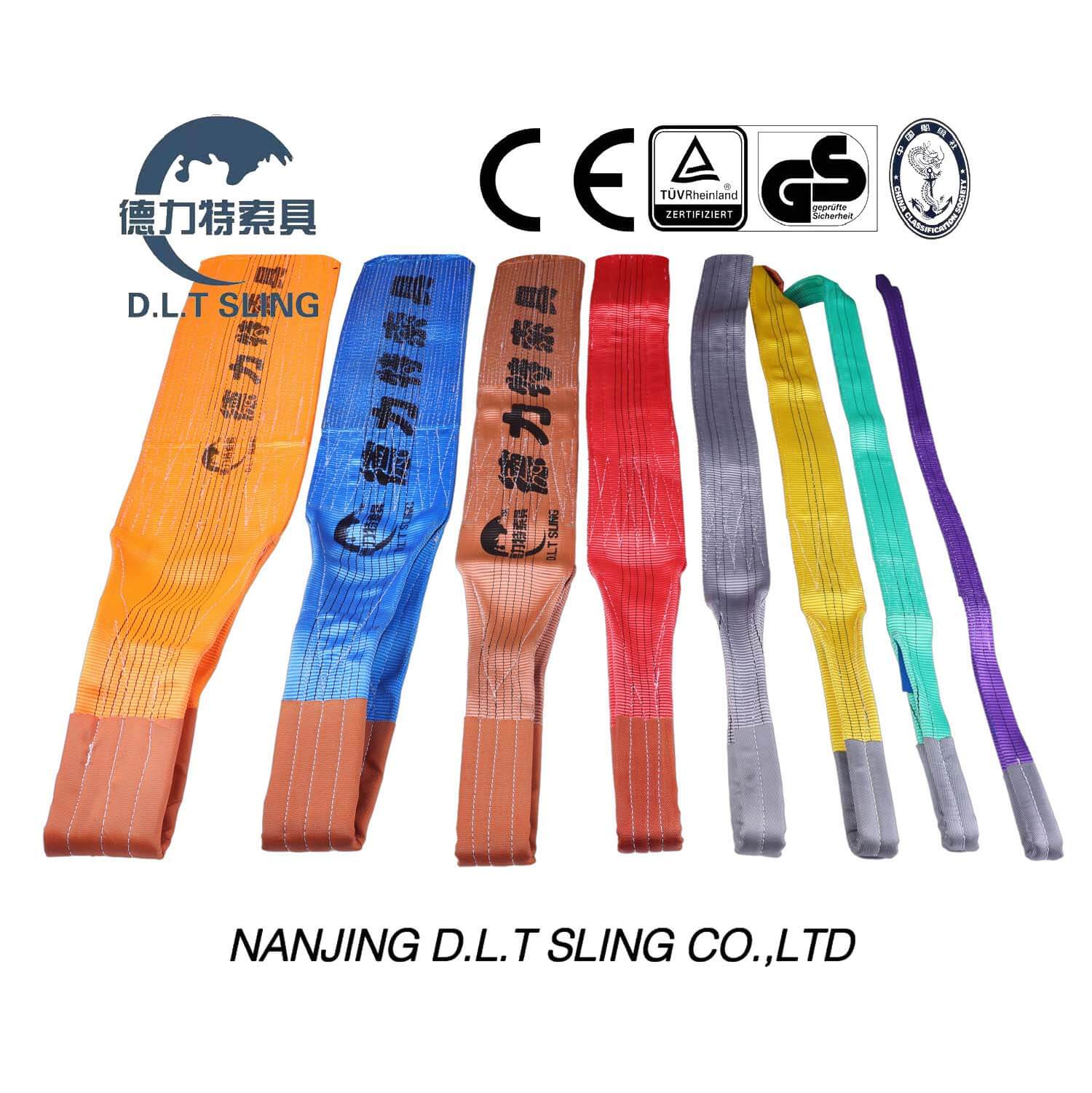
Webbing slings are an essential tool in various industries for lifting and securing heavy loads. When used correctly, webbing slings provide a safe and efficient solution for material handling operations. In this blog post, we will explore key tips and best practices to help you maximize safety and performance when using webbing slings. By following these guidelines, you can ensure the longevity of your slings, prevent accidents, and optimize lifting operations.
One of the critical factors in using webbing slings safely is understanding the Working Load Limit (WLL) and applying the appropriate safety factor. The WLL indicates the maximum load that a webbing sling can safely handle under normal working conditions. It is crucial to select a webbing sling with an appropriate WLL that matches the weight of the load being lifted. Additionally, applying the correct safety factor ensures an extra margin of safety in the lifting operation.
Webbing slings come in various configurations, including flat slings, endless slings, and round slings. Each type has its own advantages and limitations. Consider factors such as load weight, shape, and lifting environment when selecting the appropriate webbing sling. Round slings, for example, are ideal for lifting irregularly shaped loads, while flat slings are suitable for loads with defined edges.
Proper handling and usage of webbing slings are essential for maintaining their longevity and ensuring safety. Ensure that the slings are correctly positioned and securely attached to the lifting equipment. Avoid dragging the slings across rough surfaces or sharp edges, as this could cause damage. Use edge protectors or wear sleeves to protect the slings when lifting loads with sharp edges. Remember to distribute the load evenly across the sling to prevent overloading.
Regular inspections and maintenance are crucial to ensure the integrity and reliability of webbing slings. Inspect the slings before each use, checking for any signs of damage, such as cuts, abrasions, or fraying. Replace any damaged slings immediately to prevent accidents or failures. Additionally, clean and store the slings properly to prevent contamination, UV degradation, and premature wear.
Providing proper training to all personnel involved in the lifting operation is crucial. Ensure that operators are trained in the proper selection, inspection, and usage of webbing slings. They should be aware of the applicable safety regulations and standards in their industry. Regularly review and update training programs to keep up with the latest best practices and safety guidelines.
Webbing slings are versatile and durable tools that play a vital role in safe and efficient lifting operations. By understanding their load limits, selecting the right type of sling, conducting regular inspections, and providing proper training, you can maximize safety and performance when using webbing slings. Always prioritize safety, follow industry standards, and consult with experts to ensure the best practices are implemented. With these measures in place, you can achieve optimal results and protect both personnel and valuable assets in your operations.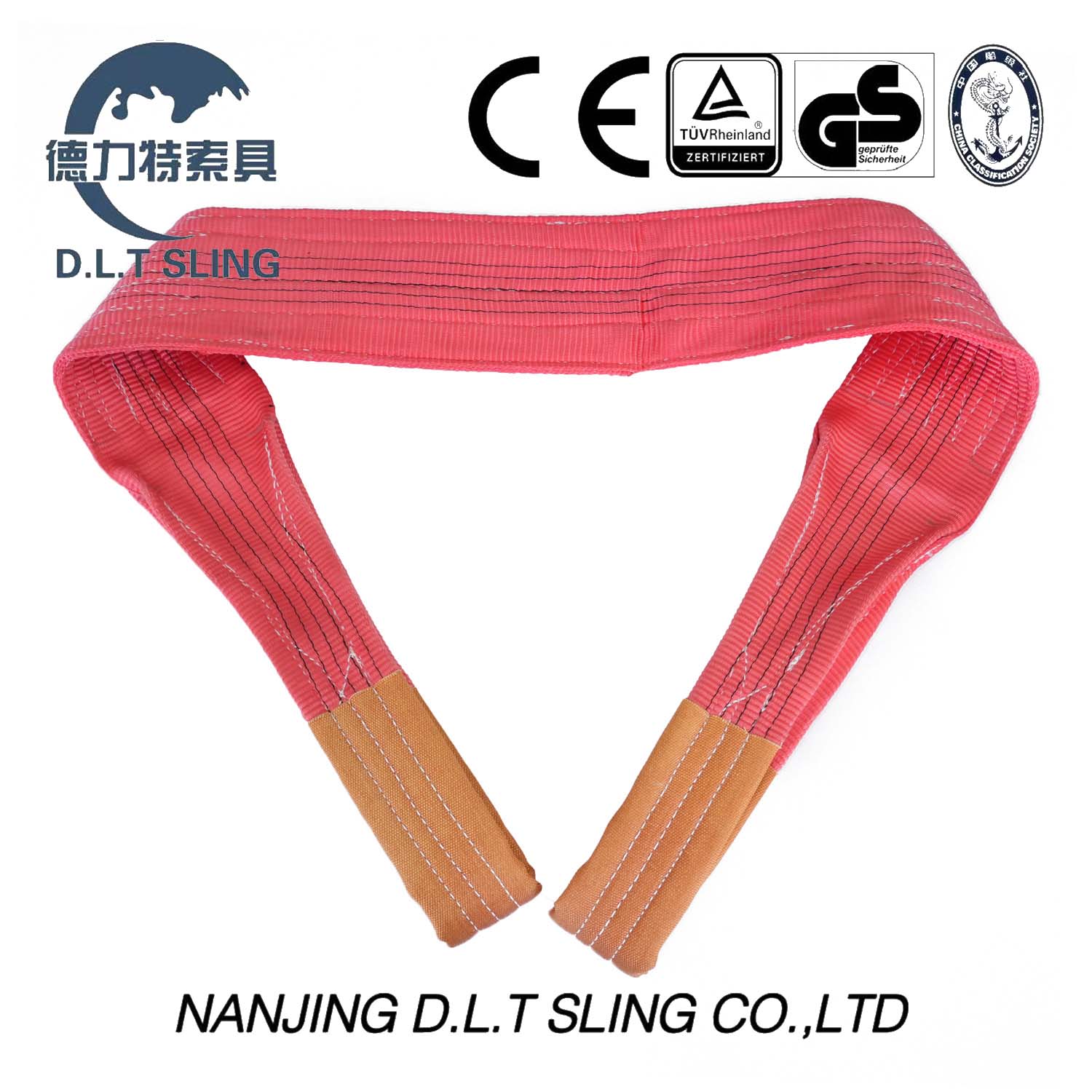
- Automotive Engine Rubber Parts8
- Automotive Lamps Rubber Parts5
- Automotive Suspension Rubber Parts2
- Automotive Wiring Harness Rubber Parts3
- Extrusion Sealing Strip1
- Industrial Electrical Rubber Parts3
- Industrial Scanners2
- Industrial electrical control3
- Industrial slings4
- Machine Tool Blades1
- Membrane Products1
- Motor1
- Racecource Rubber Products3
- Rubber Forklift Attachments1
- Rubber and plastic Parts1
- Seal2
- Tubular Motor2
- industrial hose1
- mold1
- plc2
- pump1
- racking2